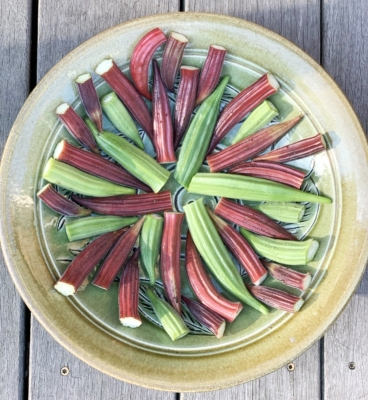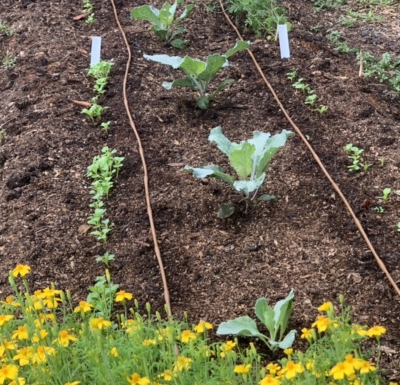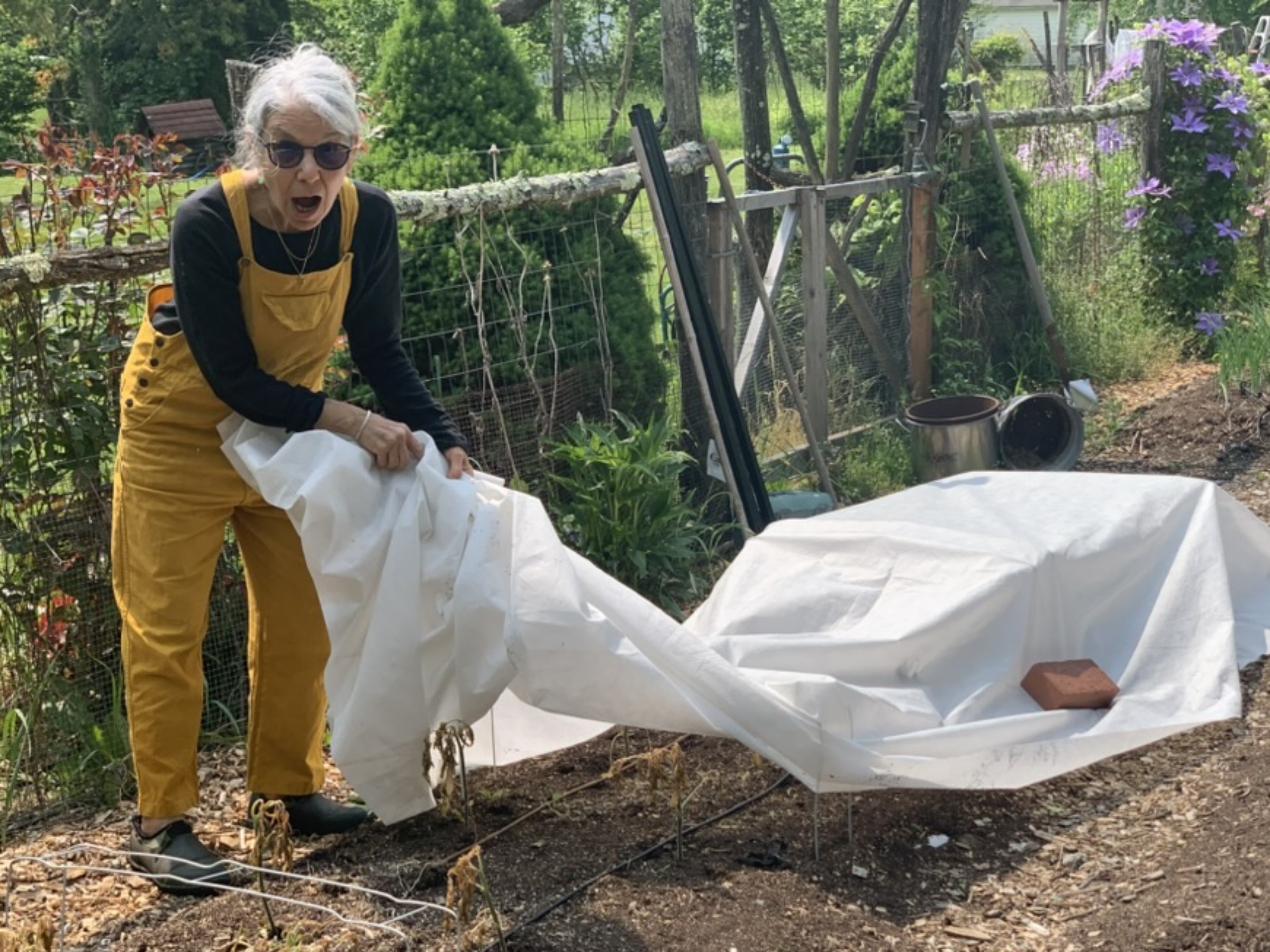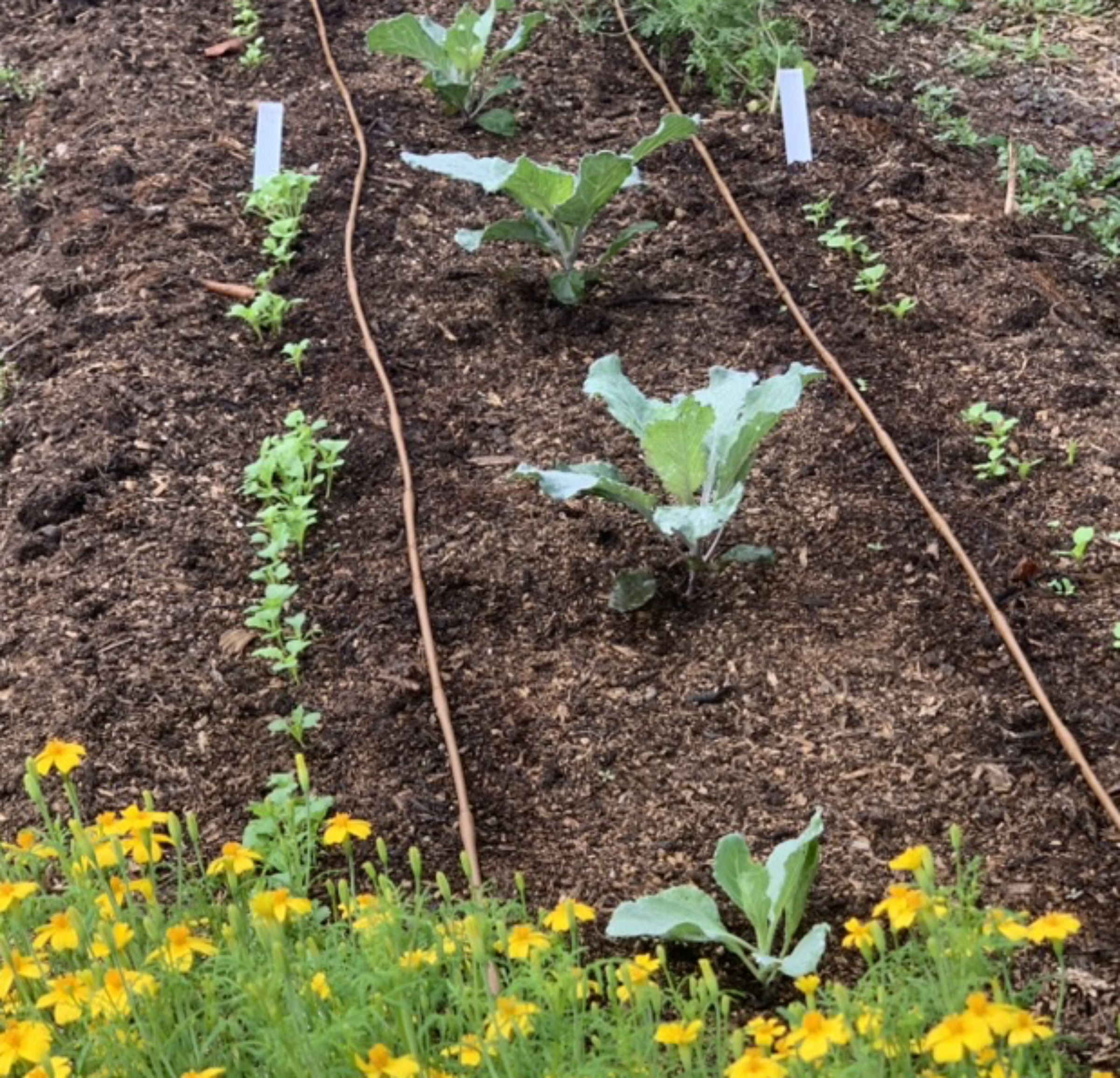RE-EVALUATION
/25 Comments/in Gardening/by Lee ReichThe Worst?!
Every year, when I tell my longtime friend Vicki, “This year is the best garden year ever,” she smiles and rolls her eyes in a friendly way. But it’s true: Another year of gardening experience, better varieties to grow (Picnic Orange pepper of last year is now on my must-grow list); improved weed management (tarping added to my list); better pest control (the dreaded spotted wing drosophila on blueberries); etc.

Picnic orange pepper
This year, Vicki was surprised when I finished my annual sentence with “the worst year ever.”
She, of course, asked why. I spared her, but will not spare you, all the gruesome details, as far as I can determine. Read more
A SOUTHERN TREAT
/1 Comment/in Vegetables/by Lee ReichA Good Site
Okra, like artichokes and dark beer, evokes from people either praise or disgust, rarely something in between. A pot of stewed okra, tomatoes, and onions sends me into creole heaven, yet makes my brother gag. I say the mucilaginous quality of okra adds “body” to a dish; he says okra is “slimy.”
This season I’m reveling in a bumper crop of okra. Such a crop would hardly be worth noting if I gardened south of the Mason-Dixon line, where okra plants grow to be the size of small trees! Growing okra up here in the Hudson Valley is somewhat of a challenge because the plants begin to shiver when temperatures drop into the 50s — not uncommon even for a midsummer night in my garden.
In spite of a good bit of hot weather this summer (1.3°F above the 127 year average), I like to think I had a hand in this season’s success with okra. And the first okra-righteous thing I did was to choose for my planting a good site: the hottest and sunniest spot in my garden.
Lack of sunlight used to be a problem when my garden beds ran east and west; tall plants, such as popcorn, on ann adjacent bed to the south of the okra bed would shade the okra. Read more
THE “W” WORD
/5 Comments/in Gardening/by Lee ReichOnward!
I don’t want to sound like a scolding parent, but have you been paying attention to your garden? Late summer weather may not inspire any more gardening activity than reaching — among the weeds, perhaps? — for a juicy tomato. But onward: There is work to be done!
About those weeds. Wait! Don’t close your eyes and stop reading (like a reprimanded child) just because I mentioned weeds. Please hear me out.
Weeds, left now to their own devices, are going to become worse troublemakers later. Annual weeds like lamb’s-quarters and purslane are dropping their seeds, sowing them for next spring. You presumably killed all perennial weeds with this season’s enthusiastic beginnings, but the roots of young perennial weeds are trying to find a home. Autumn’s cool, moist weather is just what horse nettle, bindweed, yellow and creeping woodsorrel, and other perennial weeds need to become firmly entrenched in your garden. Read more




